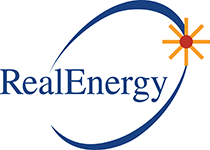The Myth of Electricity Storage Breathrough Necessity
Amory Lovins of Rocky Mountain Institute RMI’s vision is a world thriving, verdant, and secure, for all, for ever. Our mission is to drive the efficient and restorative use of resources. See the Myth of Electricity Storage Breakthrough Necessity Here: http://www.rmi.org/solar_power_myth_of_storage_breakthroughs_amory_lovins Application in the Real World RMI’s approach is to focus on unlocking market-based solutions that can be replicated and implemented now. We don’t do it alone. With philanthropic support, we convene and collaborate with diverse partners—business, government, academic, nonprofit, philanthropic, and military—to accelerate and scale solutions that tackle the toughest long-term problems. We create Abundance by Design® and apply the framework of natural capitalism. Bold Goals, Measurable Impacts. Transforming global energy use to create a clean, prosperous, and secure energy future is an ambitious, vital undertaking—and our sole focus. To succeed, we need to rapidly scale our impact—to “reinvent fire”—making the shift from fossil fuels to energy efficiency and renewables by 2050, if not sooner.That’s why we’ve established bold goals to achieve by 2025—accomplishments that put us on track to achieve the full energy system transformation.From the U.S. to China to the rest of the world, we’ll drastically cut carbon emissions to tackle climate change, unlock enormous economic opportunity, and make our energy systems clean, prosperous, and secure. This is our promise to ourselves, to you, and to the world. We welcome you on this journey with us. Following is where we need to be by 2025 and, in part, how we’ll do it. 1. Source U.S. electricity renewably By 2025, our programs will help shift the electricity system one-third of the way toward our vision and create the dynamics and momentum to carry us through to 2050. They will cut U.S. electricity [...]
